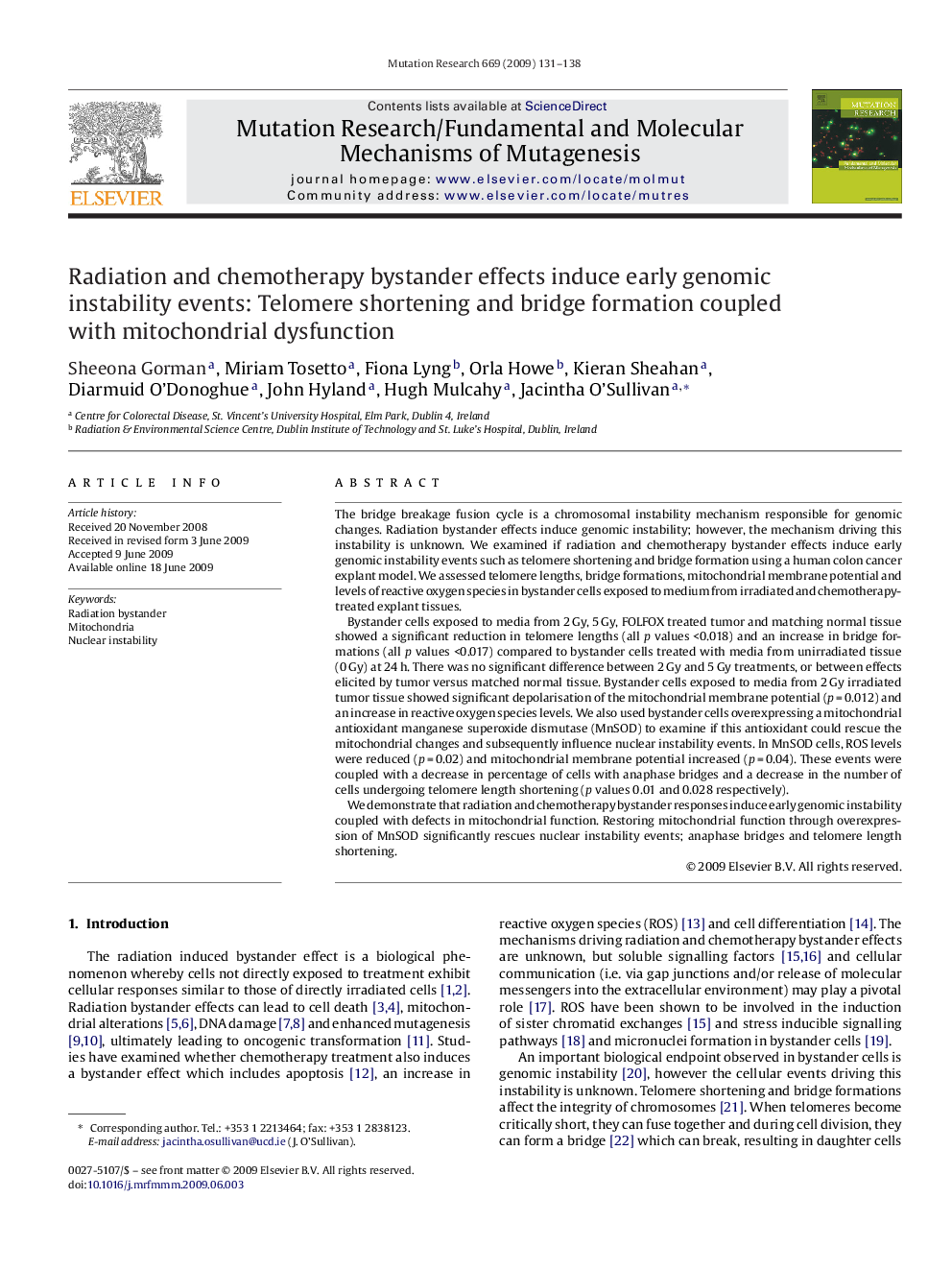| Article ID | Journal | Published Year | Pages | File Type |
|---|---|---|---|---|
| 2146962 | Mutation Research/Fundamental and Molecular Mechanisms of Mutagenesis | 2009 | 8 Pages |
The bridge breakage fusion cycle is a chromosomal instability mechanism responsible for genomic changes. Radiation bystander effects induce genomic instability; however, the mechanism driving this instability is unknown. We examined if radiation and chemotherapy bystander effects induce early genomic instability events such as telomere shortening and bridge formation using a human colon cancer explant model. We assessed telomere lengths, bridge formations, mitochondrial membrane potential and levels of reactive oxygen species in bystander cells exposed to medium from irradiated and chemotherapy-treated explant tissues.Bystander cells exposed to media from 2 Gy, 5 Gy, FOLFOX treated tumor and matching normal tissue showed a significant reduction in telomere lengths (all p values <0.018) and an increase in bridge formations (all p values <0.017) compared to bystander cells treated with media from unirradiated tissue (0 Gy) at 24 h. There was no significant difference between 2 Gy and 5 Gy treatments, or between effects elicited by tumor versus matched normal tissue. Bystander cells exposed to media from 2 Gy irradiated tumor tissue showed significant depolarisation of the mitochondrial membrane potential (p = 0.012) and an increase in reactive oxygen species levels. We also used bystander cells overexpressing a mitochondrial antioxidant manganese superoxide dismutase (MnSOD) to examine if this antioxidant could rescue the mitochondrial changes and subsequently influence nuclear instability events. In MnSOD cells, ROS levels were reduced (p = 0.02) and mitochondrial membrane potential increased (p = 0.04). These events were coupled with a decrease in percentage of cells with anaphase bridges and a decrease in the number of cells undergoing telomere length shortening (p values 0.01 and 0.028 respectively).We demonstrate that radiation and chemotherapy bystander responses induce early genomic instability coupled with defects in mitochondrial function. Restoring mitochondrial function through overexpression of MnSOD significantly rescues nuclear instability events; anaphase bridges and telomere length shortening.
